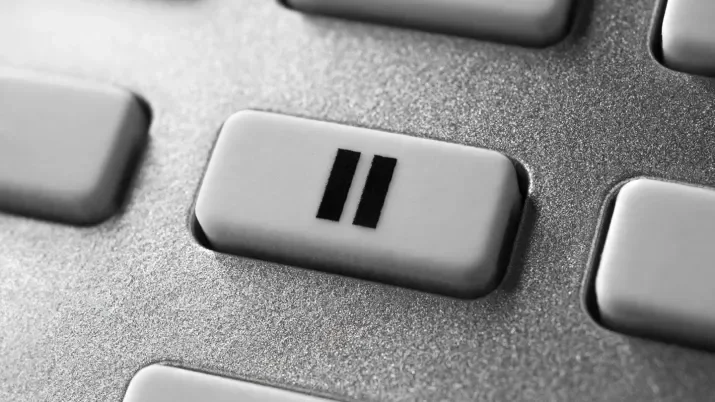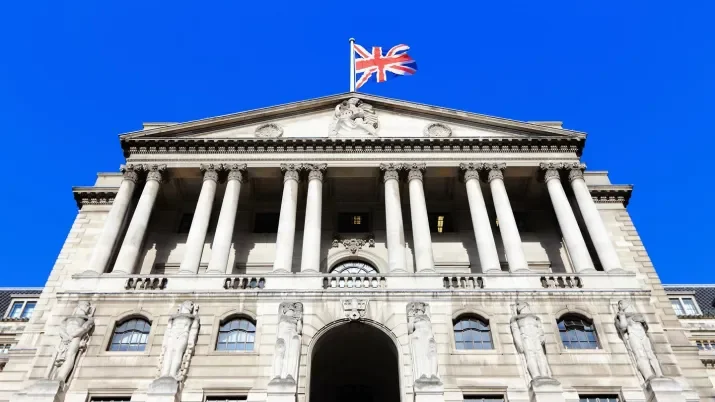When Will The Fed Stop Hiking?
Whilst no hike from the FOMC was expected overnight, markets are still pricing in an eighth hike in September and a ninth in December, which would take the upper bound of the Fed Funds rate to 2.5%.
Looking at the median dot plots of FOMC members’ forecasts for 2019, there are three further hikes and a rate of 3.25%. However, market participants have consistently refused to believe any of these slightly longer elements of forward guidance.
The question everyone is asking is when will the Fed pause its hiking, and what could be the catalyst for it? Up to now they have been tightening policy in the absence of a current inflation threat – can they really get to 12 hikes by the end of 2019?
We don’t think so, with the main reason being that the commercial banks are likely to take over the tightening process. Remember tightening comes from both the central bank in the form of base rate movements, and then from the commercial banks in the form of credit tightening. So far the latter has not really happened as the banks have enjoyed good results, credit growth, low loan losses and have been bolstered by high levels of good quality capital. However, we do know that they are risk adverse and that they absolutely need to prove they can handle the next downturn without destroying investor confidence.
Those that follow the commercial bank surveys will have noticed there is really no big hint that the banks’ risk appetite is dwindling, and in general there has been little in the way of tightening. But we think this will change should the yield curve flatten further or invert, which is reasonably likely, provided the Fed pushes through two more hikes this year and long-end rates do not go higher. (In a recent blog we explained why the drivers that have kept long rates low may well abate for a while , taking some pressure off the flattening)
As we have said before, the flat or inverted curve (we use two-year vs 10-year) will prompt a raft of economic forecasts predicting a recession in the proceeding 12 to 18 months after the event. The flat yield curve itself does not signal weakness, but these high profile forecasts will come from the major US banks and the message will feed down to their credit departments to gradually reel back on lending. This will come in the form of higher credit spreads being charged, lower volumes being leant, lending quality being increased, or some combination of all three. This will take several months or quarters to filter through, and the Fed will see this new tightening through its surveys and data on lending. Consequently while this is happening, in the absence of a marked pick-up in inflation, the Fed will be able to hand over the tightening baton to the banks and take a pause. Whether it’s a pause or an eventual shift into reverse, time will tell, but it’s a very tricky situation to balance and the bankers have a poor track record of keeping the expansion going for too long after such a tightening. Which is why the flat or inverted curve can be a useful indicator of future weakness.
Returning to the question, then, unless there is a move towards higher rates at the longer end of the yield curve, then a flat or inverted curve is inevitable in the next six months, which will lead to a handover of tightening by the Fed to the commercial banks at some point in the middle of 2019. Naturally there are other reasons why the Fed may pause, most of them being data-related, but we see this one as the most likely currently.
Looking at the median dot plots of FOMC members’ forecasts for 2019, there are three further hikes and a rate of 3.25%. However, market participants have consistently refused to believe any of these slightly longer elements of forward guidance.
The question everyone is asking is when will the Fed pause its hiking, and what could be the catalyst for it? Up to now they have been tightening policy in the absence of a current inflation threat – can they really get to 12 hikes by the end of 2019?
We don’t think so, with the main reason being that the commercial banks are likely to take over the tightening process. Remember tightening comes from both the central bank in the form of base rate movements, and then from the commercial banks in the form of credit tightening. So far the latter has not really happened as the banks have enjoyed good results, credit growth, low loan losses and have been bolstered by high levels of good quality capital. However, we do know that they are risk adverse and that they absolutely need to prove they can handle the next downturn without destroying investor confidence.
Those that follow the commercial bank surveys will have noticed there is really no big hint that the banks’ risk appetite is dwindling, and in general there has been little in the way of tightening. But we think this will change should the yield curve flatten further or invert, which is reasonably likely, provided the Fed pushes through two more hikes this year and long-end rates do not go higher. (In a recent blog we explained why the drivers that have kept long rates low may well abate for a while , taking some pressure off the flattening)
As we have said before, the flat or inverted curve (we use two-year vs 10-year) will prompt a raft of economic forecasts predicting a recession in the proceeding 12 to 18 months after the event. The flat yield curve itself does not signal weakness, but these high profile forecasts will come from the major US banks and the message will feed down to their credit departments to gradually reel back on lending. This will come in the form of higher credit spreads being charged, lower volumes being leant, lending quality being increased, or some combination of all three. This will take several months or quarters to filter through, and the Fed will see this new tightening through its surveys and data on lending. Consequently while this is happening, in the absence of a marked pick-up in inflation, the Fed will be able to hand over the tightening baton to the banks and take a pause. Whether it’s a pause or an eventual shift into reverse, time will tell, but it’s a very tricky situation to balance and the bankers have a poor track record of keeping the expansion going for too long after such a tightening. Which is why the flat or inverted curve can be a useful indicator of future weakness.
Returning to the question, then, unless there is a move towards higher rates at the longer end of the yield curve, then a flat or inverted curve is inevitable in the next six months, which will lead to a handover of tightening by the Fed to the commercial banks at some point in the middle of 2019. Naturally there are other reasons why the Fed may pause, most of them being data-related, but we see this one as the most likely currently.



